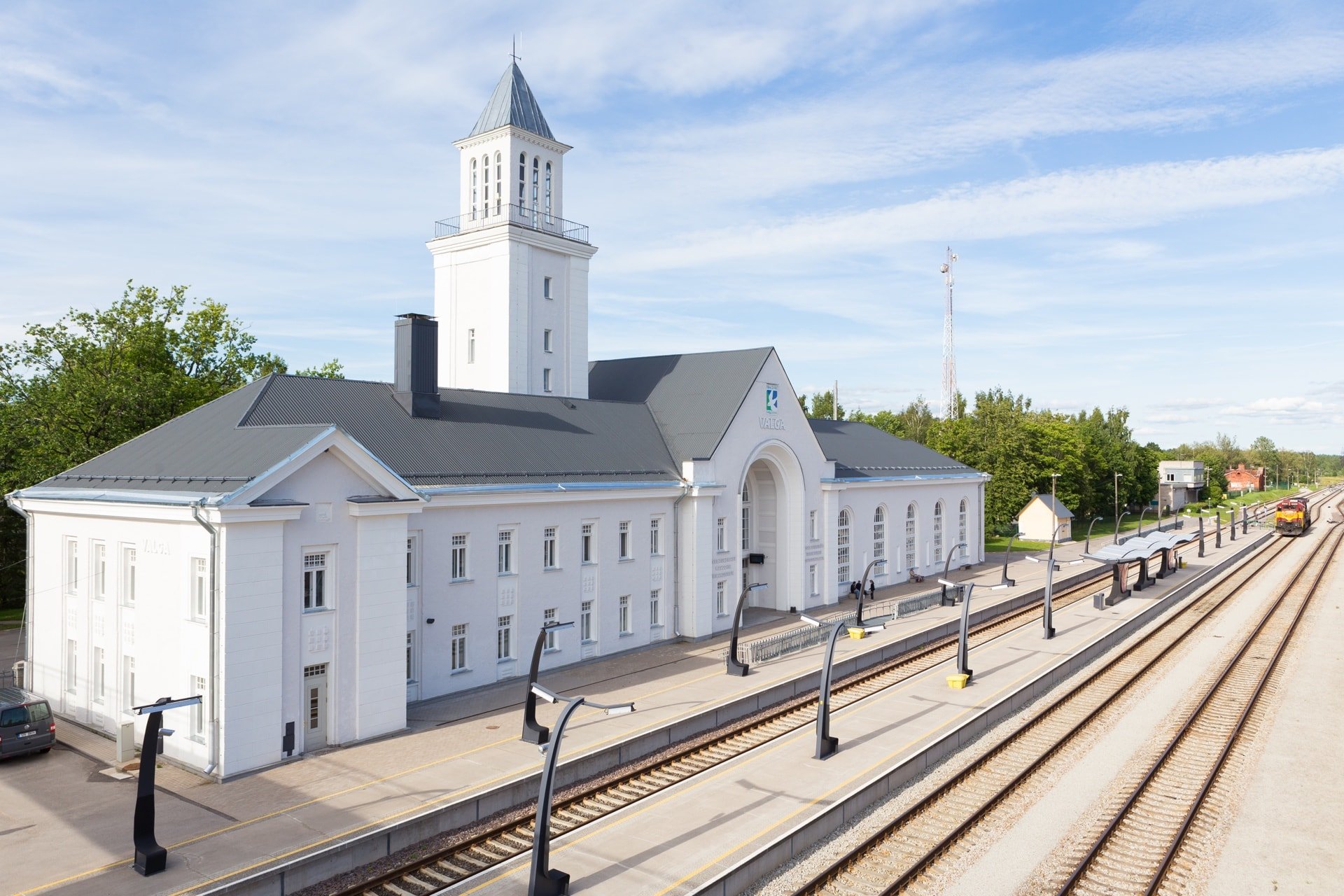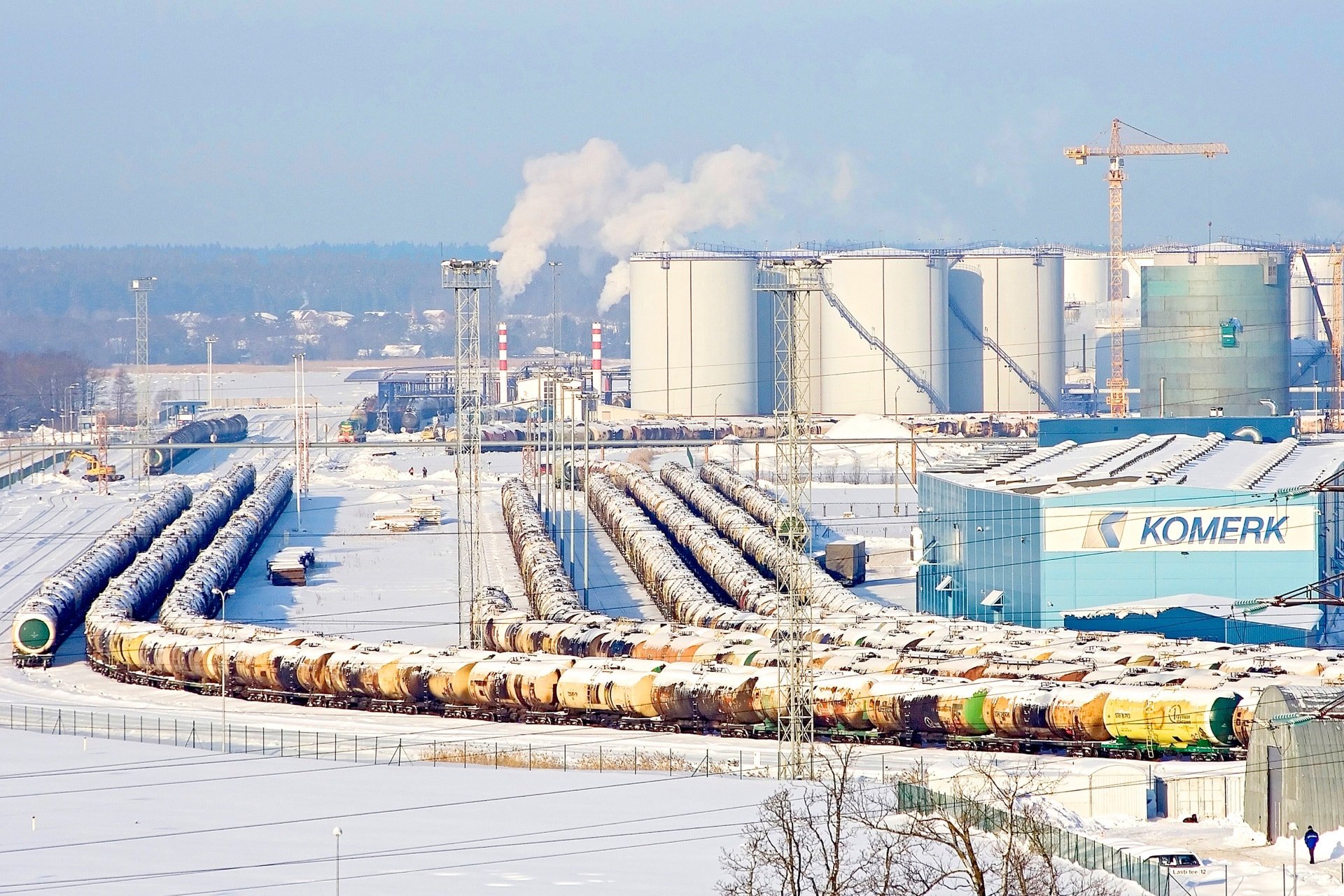For corporate customers
Estonian Railways continues to invest its own funds and means from EU structural funds in maintenance and development of the railroad and its surroundings. Investments have been made in railroad renovation, improvements to increase train speed, and better quality in passenger transport, incl. construction and maintenance of pedestrian tunnels and bridges.
The entire railroad infrastructure is to accommodate a service speed of 120 km/h for passenger trains and 80 km/h for freight trains and ensure safer train traffic with lesser vibration and noise levels.
Rail transport is one of the more eco-friendly modes of transport, the resource and energy costs and land usage of which per unit (ton-kilometer, passenger kilometer) are many times less than those associated with road transport and air transport.
Per one person riding a train, two thirds less carbon dioxide is emitted than per one person driving a car on their own. The energy costs of a train are eight times lower than those of an airplane. Comparing air transport with train transport per passenger kilometer, an airplane’s energy costs are 10 times higher than those of a train.
Why should I choose Estonian Railways?
- Spare capacity on both railroads and harbors/ports
- Free competition
- Infrastructure in excellent repair enables a service speed of 160 km/h for passenger trains and 80 km/h for freight trains on the main routes
- Deepwater ports that enable handling of ships of up to 300,000 DWT
- 1,500 meter station tracks in border stations and intermediate stations, enabling handling of long trains
- High quality, reliable traffic control ensures fast wagon turn-round times
- Estonian Railways receives trains weighing up to 5,200 tons or 57 standard units at Koidula and Narva border stations and up to 5,600 tons or 57 standard units at Narva border station. Subject to special agreement with October Railway, Narva border station can receive trains weighing up to 7,000 tons or 71 standard units.
- Good geographical location for fast access to important hubs
Railroad
The infrastructure of Estonian Railways is part of the railroad network with a track gauge of 1,520 mm and expands across 1,229 km of railroads.
Estonian Railways has three border stations - Narva, Koidula, and Valga.
- Track gauge: 1520/1524 mm
- General length of railroad: 1214 km
- Including double-track: 94 km
- Number of switch blades: 1161
- Length of electric railroad: 144 km
- Number of passenger platforms: 129 usable
- Number of stations: 61
- Capacity: 56 pairs of trains in 24 hours

Stations
The infrastructure of Estonian Railways includes 61 stations, three of which are border stations: two at the Russian border (Narva-Ivangorod and Koidula-Petchory) and one at the Latvian border (Valga-Valka).
The total capacity of border stations is 56 pairs of trains in 24 hours: 38 pairs of trains on the Russian route and 18 trains on the Latvian route. Both border stations and intermediate stations have 1,500 meter station tracks, enabling servicing of long freight trains.
Narva railroad border station
- Number of pairs of rails: 12
- Hectares: 28
- Tracks in kilometers: 25,1
- Capacity: 23 pairs of trains in 24 hours
Koidula railroad border station
- Number of pairs of rails: 10
- Hectares: 92
- Tracks in kilometers: 22,7
- Capacity: 15 pairs of trains in 24 hours
The station complex also includes a building for customs and veterinary check purposes as well as a railway repair workshop for locomotives and rail cars.
A node between Estonia, Russia, and Latvia.
Valga railroad border station
- Number of pairs of rails: 10
- Hectares: 22,7
- Tracks in kilometers: 21,9
- Capacity: 18 pairs of trains in 24 hours

Ports
Via railroad connections in Estonia, goods can be transported to seven ports, the largest of which is Muuga Harbour owned by the Port of Tallinn. Estonian ports are practically ice free and most of them have ample space for new developments. The easternmost port – Port of Sillamäe - is situated merely 25 km from the Russian state border.
Port of Tallinn
Port of Tallinn (AS Tallinna Sadam) is Estonia’s largest cargo and passenger port complex that fills an important function in the Estonian transport system and national economy as a whole. Considering both the number of passengers and trade flows, the Port of Tallinn that operates in the form of a state enterprise also constitutes the largest port complex on the Baltic Sea. The Port of Tallinn consists of five harbors: Old City Harbour, Muuga Harbour, Paldiski South Harbour, Paljassaare Harbour, and Saaremaa Harbour.
Port of Sillamäe
Port of Sillamäe (AS Sillamäe Sadam) is the second largest maritime cargo port in Estonia, playing an ever increasing role in the Estonian and especially North-Eastern Estonian transport system and economy as a whole. The privately owned Port of Sillamäe sits only 25 km from the EU - Russian border, thus enabling efficient transit between the European Union and Russia and CIS nations. As a multifunctional port, the Port of Sillamäe benefits from infrastructures and superstructures that permit handling of all groups of goods from oil and bulk goods to container goods. The water depth at the quay is up to 16 m, enabling servicing of all ships entering the Baltic Sea through the Danish straits.